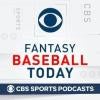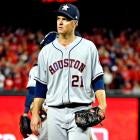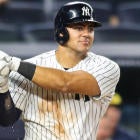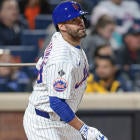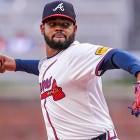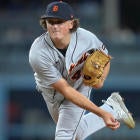The biggest draft weekend of the year looms, as does MLB's delayed opening day, and there's still so much left unsettled in the Fantasy Baseball landscape. Position battles are playing out in dual-squad exhibition games, making it tough to know who, exactly, is fighting for a spot on the active roster, let alone who is winning a position battle or a rotation spot. What lineups will look like, who will start where and when … it's all still up in the air around the league.
And that is just the beginning of what Fantasy players have questions about for the 2020 season. If you're looking for answers to questions about position battles, injuries and more out of summer camp, your best bet is to read Scott White's regular notebooks, where he rounds up everything you need to know from around the league.
For the bigger picture questions, you've come to the right place. I went through the biggest questions we've received at FantasyBaseball@CBSi.com — and don't be afraid to hit us with more! — and on Twitter, with the goal of helping you get your bearings for the season. Here are those answers, on topics ranging from how to approach strategy for a shortened season to how to handle roster changes for your league.
So much of fantasy baseball is being on the right side of reversion to the mean. How, generally, should I adjust my thinking given that the whole season will be a relatively small sample size? Especially in a deep league. More volatile/streaky profiles? Fewer?
— Matt Vadnais (@DoctorFanboi) July 14, 2020
This is a tough one to answer, because we simply don't have the evidence for what will or won't work in this kind of context. Some of the research I've done shows that hitters provide a better return on investment than pitchers at pretty much every point in the draft, but pitcher ADP is more predictive of performance early in the season than later, a trend that is less pronounced for hitters.
With that in mind, you could make an argument that investing in pitchers early might make more sense in this shortened season, however I would caution that this probably only goes for the top of drafts — pitcher value tends to evaporate much more quickly the further you get away from the top of the position. Which is to say, your best strategy might be to acquire two pitchers in the first three rounds and then focus on hitting. In an auction, you can also follow the approach I went with in our most recent auction, bidding up two aces and then focusing on values and upside the rest of the way.
As far as whether you should target streakier profiles in a shortened season, I think there is some merit to that idea, though I wouldn't look at it as targeting streaky players for their own merits — after all, they're just as likely to suffer a cold streak as a hot streak. Rather, I would say that those players who typically get pushed up for their stability should probably be downgraded, because there's no such thing as stability in a 60-game season. The sample size is too small.
That would include someone like Zack Greinke, who we talked about a bit on Monday's episode of the Fantasy Baseball Today podcast, which you can subscribe to here and listen to below:
Greinke typically ends up pretty close to 200 strikeouts with good rate stats, and is almost always undervalued in Fantasy as a result. However, with just 12 or so starts to rack up stats, Greinke's workload margin on most pitchers is going to be muted. He'll still be good, but add in the inability to compile stats that put him on board with more efficient strikeout pitchers and the inherent volatility of the shortened season, it might be enough to push him down a few spots.
You can view someone like Jose Abreu in a similar fashion, I think. He is typically a safe bet for batting average and RBI, but he doesn't really have a ton of upside — he was 14th among qualifiers in OPS at first base last season. A bad month or a two-week injury could really sink him.
We've done this for the 162-game season in the past, and you can see those results based on 2019 CBS Fantasy leagues here. Unfortunately, it won't be as simple as just dividing the 162-game results by 2.7, because pitcher workloads aren't the same early in the season as they are later on, which could really be a factor with a shortened run-up to the season in 2020.
Unfortunately, that's the best I can do right now, so here are last year's results pro-rated to a 60-game schedule:
POINTS | AVG | HR | R | RBI | SB | W | S | K | ERA | WHIP |
12 | 0.278 | 142 | 438 | 421 | 56 | 38 | 37 | 601 | 3.497 | 1.131 |
11 | 0.274 | 136 | 424 | 409 | 51 | 36 | 33 | 577 | 3.651 | 1.164 |
10 | 0.272 | 131 | 417 | 400 | 47 | 35 | 30 | 559 | 3.754 | 1.184 |
9 | 0.27 | 128 | 407 | 392 | 45 | 34 | 29 | 544 | 3.834 | 1.2 |
8 | 0.269 | 125 | 401 | 386 | 42 | 33 | 26 | 533 | 3.909 | 1.214 |
7 | 0.267 | 121 | 394 | 379 | 40 | 31 | 24 | 520 | 3.973 | 1.228 |
6 | 0.266 | 120 | 387 | 373 | 38 | 31 | 23 | 507 | 4.041 | 1.242 |
5 | 0.264 | 116 | 381 | 366 | 36 | 30 | 20 | 493 | 4.116 | 1.256 |
4 | 0.262 | 113 | 373 | 357 | 33 | 29 | 18 | 478 | 4.192 | 1.27 |
3 | 0.26 | 110 | 363 | 349 | 31 | 27 | 15 | 461 | 4.276 | 1.285 |
2 | 0.258 | 104 | 351 | 337 | 28 | 26 | 11 | 438 | 4.375 | 1.303 |
1 | 0.254 | 97 | 331 | 317 | 24 | 23 | 7 | 396 | 4.525 | 1.329 |
That's a good starting point. I would imagine ERA and WHIP will wind up being a bit higher this season, because my expectation is pitchers will be more impacted by the stop-and-start nature of the season than hitters – especially because ERA tends to rise as the weather warms. Your target ERA might end up being one-fifth of a run higher as a result.
If you're desperate for pitching, Urias is certainly a must-own pitcher. In 184 career innings, Urias has a 3.18 ERA, 187 strikeouts, and a 1.28 WHIP. If that's all he does as a full-time starter, he's a must-start player. Of course, there are reasons to be even more optimistic given the jump his strikeout and swinging strike rates made along with his increased velocity in 2019. Injuries took their toll on Urias early in his career, but he's still just 23 years old. If he can sustain that velocity increase and hold up to a starter's workload, there's still top-12 upside here.
What’s the single biggest points draft strategy that’s different for this crazy year?
— Cory (@imsampsonite) July 14, 2020
I think the biggest change might be that SPARPs (Starting Pitchers As Relief Pitchers) might have less value than ever, which is a shame, because this was shaping up to be a terrific class of SPARP options. However, with workload concerns early in the season, the chances of starters racking up wins and (just as importantly for points) quality starts are lower than ever. Even if that disappears after a few weeks and starters are back to their normal pitch counts by mid-August, you're probably better off just focusing on normal closers in your reliever spots, who might be even more valuable than normal if all starters are less likely to get wins and quality starts early in the season.
One other thing I would at least consider: Push Trevor Bauer up your board. It's far fetched, but the Reds have talked about him pitching on a four-man rotation schedule, with the rest of the group rotating around him. If that actually does happen, he could potentially see 20% as many starts, including perhaps double the number of two-start weeks. Like I said, it's a long shot, but even an extra start or two could make a difference when most aces will max out at 13 and most other pitchers will get 12 or so.
I think you can make a strong case for going with Cole, locking in that high-volume ace, grabbing another ace at the 2-3 turn, and then focusing on hitters for the next five to seven rounds. Cole might be one of the pitchers who isn't affected by a limited workload early on, and that could make him even more valuable than he otherwise would be.
However, if you're skittish of going with a pitcher that early — and I wouldn't blame you! — I think Betts is the right call here. He's going to hit leadoff in a great lineup, has terrific plate discipline, and should rack up doubles to make up for what he might lack in over-the-fence pop relative to Bellinger and Acuña. I know Betts is kind of being discounted here, but he's still a dynamo in points.
So, we've got 9.5 weeks to cover and nine pitching spots. Let's set the minimum at 4.5 starters, averaging 5.5 innings per start, plus 4.5 relievers averaging 20 appearances at one inning per appearance, which gets you right around 400. I would go just a tad lower than that for the minimum, so let's say 375 — right around 40 per week. And on the max side, I'd set it at 575. If you fill out a lineup with nothing but starters who go six innings for 12 starts, you'd go above it, but there aren't many other scenarios. That comes out to right around 60 innings per week, too.
I don't think winning percentage is the right way to do this exercise at all, because it ultimately doesn't matter how many games your opponent wins, it matters how many runs they score and give up. The Rockies were a bad team by win percentage last season, but they scored a ton of runs because they play at Coors Field — it would not have been particularly useful to use their win percentage to judge what kind of matchup they would be for your pitching staff.
But, generally speaking, run differential (and "Pythagorean Record"https://en.wikipedia.org/wiki/Pythagorean_expectation) is a better predictor of future win-loss record than past win-loss record, and Vegas win totals are a better predictor of win-loss record in the coming season than last year's results will be. I would suggest either Vegas win totals or stats derived from various projection systems, rather than just going off last year's results either way.
This is either going to require the commissioner to keep an eagle eye on rosters, or more likely, a gentleman's agreement to abide by the rule. There may be situations where exceptions can be made in honor of the spirit of the rule — if a player is announced as going on the IL, but the transaction has not officially gone through, as an example — but this is the kind of thing where I would adopt a two-strike policy. If a player in your league is found to have abused the unlimited IL spots once, they get a warning. If they do it again, there needs to be some punishment — forfeiture of that week's game or stats would probably be a big enough deterrent in a shortened season like this, where that would represent more than 10% of the season.







